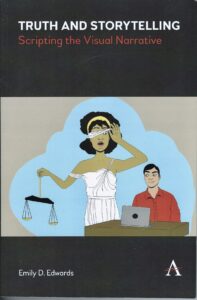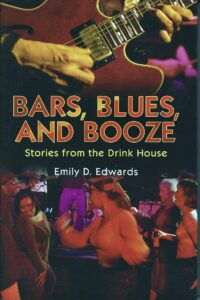There are many books on screenwriting that suggest to writers there are “secrets of Hollywood” and guaranteed formulas for success. The implication is that with the right recipe and a little luck any student can whip out the script that will provide that triumphant red carpet walk toward financial success and global appreciation. It is rare for a book to tell aspiring writers that they may already know the secret of great stories nestled in their own experience: the people they encounter in life, their observations of events, and their personal reactions to them. The intentions of this book is to provide for the creativity writers already have, to help them see the stories waiting to be recognized, recovered, and shaped into the scripts of visual narrative. While the emphasis of this book is on creating scripts intended for production of moving image media, the guide can be adapted to the creativity of various types of storytellers working in a variety of media. One of the needs for art is the mirror, a reflection of human existence and what is glorious, tragic, wonderful, and funny about life. In an age of “post-truth,” where derivative and grotesquely bogus stories are abundant, globally networked, and digitally streamed, this book examines what it means to both artists and audiences when the mirror is consistently distorted, inaccurate, and biased. The book offers a guide for finding authenticity in fictional narrative, regardless of genre or form. The book is intended as a compass for writers to better understand and confront the truths they want to reveal through narrative stories and how to find legitimacy in the fictional characters and situations they create. One element that sets this book apart from others is the use of storyboarding to explain ideas. There are many books that teach fundamentals of writing and producing for the screen, promising the reader great success through formula. This book is a guide for writers in finding their own creative voice.
Graphic Violence provides an innovative introduction to the relationship between violence and visual media, discussing how media consumers and producers can think critically about and interact with violent visual content. It comprehensively surveys predominant theories of media violence and the research supporting and challenging them, addressing issues ranging from social learning, to representations of war and terrorism, to gender and hyper-masculinity. Each chapter features original artwork presenting a story in the style of a graphic novel to demonstrate the concepts at hand. Truly unique in its approach to the subject and medium, this volume is an excellent resource for undergraduate students of communication and media theory as well as anyone interested in understanding the causes and effects of violence in media.
Bars, Blues, and Booze collects lively bar tales from the intersection of black and white musical cultures in the South. Many of these stories do not seem dignified, decent, or filled with uplifting euphoria, but they are real narratives of people who worked hard with their hands during the week to celebrate the weekend with music and mind-altering substances. These are stories of musicians who may not be famous celebrities but are men and women deeply occupied with their craft–professional musicians stuck with a day job. The collection also includes stories from fans and bar owners, people vital to shaping a local music scene. The stories explore the “crossroads,” that intoxicated intersection of spirituality, race, and music that forms a rich, southern vernacular. In personal narratives, musicians and partygoers relate tales of narrow escape (almost getting busted by the law while transporting moonshine), of desperate poverty (rat-infested kitchens and repossessed cars), of magic (hiring a root doctor to make a charm), and loss (death or incarceration). Here are stories of defiant miscegenation, of forgetting race and going out to eat together after a jam, and then not being served. Assorted boasts of improbable hijinks give the “blue collar” musician a wild, gritty glamour and emphasize the riotous freedom of their fans, who sometimes risk the strong arm of southern liquor laws in order to chase the good times.
Considered sinister by Western religious traditions and bizarre in mainstream America, supernatural beliefs and the rituals of occult traditions are often publicly disparaged. But they are paradoxically embraced and exposed by popular culture, in television shows such as Bewitched and in movies from The Wizard of Oz to The Craft, according to Emily D. Edwards. Metaphysical Media: The Occult Experience in Popular Culture is an in-depth discussion of the media’s presentation of a wide spectrum of the occult that also serves as a comprehensive sourcebook of movies and television programs that deal with supernatural characters and themes.
Metaphysical Media focuses on the blurred definitions of topics associated with the occult as they are presented in popular culture to show moving-image media as devices that help structure an understanding of the supernatural world. Edwards examines what media treatment of supernatural subjects and the very characteristics of the media themselves reveal about the persistence of the occult. She maintains that popular art has always had a close association with the paranormal or supernaturalsometimes in illustration of an ideology, sometimes in ridicule of it, and sometimes as invocation itself.Beginning with an overview of the role of the media in contemporary society and in its use of the occult, Metaphysical Media looks at the properties of media technology that extend human senses beyond biological boundaries. Edwards then discusses specific media treatment of topics related to the occult, including witchcraft, atavism, reincarnation, out-of-body experiences, and lycanthropy. She outlines the interplay of media and folklore regarding taboos about the handling of the dead and investigates media stories about creatures that cross the boundaries between human, beast, and god.




